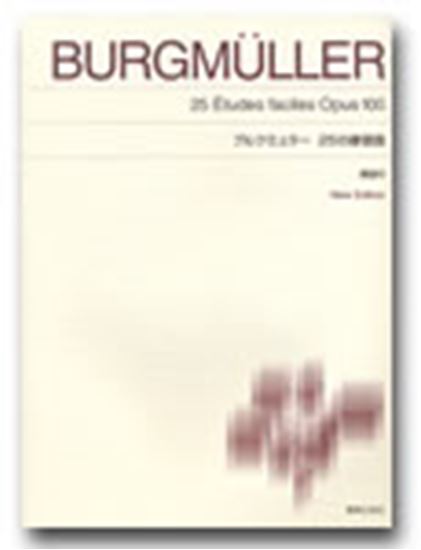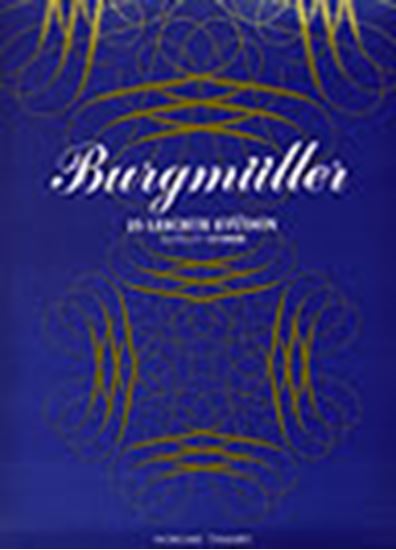Burgmüller, Johann Friedrich Franz : 25 Etudes faciles et progressives, conposées et doigtées expressément pour l'étendue des petites mains L'adieu Op.100-12
Work Overview
Genre:etude
Total Playing Time:1 min 00 sec
Copyright:Public Domain
Additional Notes:表記ゆれの例:わかれ さようなら
Commentary (3)
Author : Sato, Takashi
Last Updated: January 31, 2022
[Open]
Author : Sato, Takashi
The French word “L'adieu” does not signify a mere farewell, but rather a fated separation, perhaps never to meet again. The tempo marking “Molto agitato” and the accents on the second beat of measures 5, 6, 14, and 15 evoke anxiety and loneliness. Does the C major section from measure 17 recall a joyful past? Performing with your own narrative in mind may help to infuse the piece with emotion.
Performance Points (Original Tempo ♩=184)
The piece begins with a highly eloquent introduction, featuring a figure with an appoggiatura twice at the opening, followed by a leap of a seventh. Consider: what if the appoggiatura E in measure 1 were absent, and the note simply descended to D? What if the seventh in measure 3 were an octave? Reflecting on these alternatives will naturally reveal how best to express the music.
- From measure 5, aim to highlight the harmony of the sixths between the left and right hands, ensuring the right-hand triplets are not too strong.
- Execute the finger changes on the same notes in measures 14 and 15 smoothly, and play the left-hand accompaniment figure from measure 17 softly and evenly.
(From To-on Edition “Burgmüller 25 Etudes” (NS70))
Author : Iida, Arisa
Last Updated: March 15, 2018
[Open]
Author : Iida, Arisa
Musical example provided by: Ongaku no Tomo Sha
Author : Ooi, Kazurou
Last Updated: May 10, 2019
[Open]
Author : Ooi, Kazurou
Regardless of how one interprets the title, the opening tempo marking Allegro molto agitato and the metronome marking quarter note = 184 should be strictly adhered to. When composers write molto agitato, the tempo is often fast and restless (e.g., Chopin Op. 10 No. 9, Liszt, Transcendental Etude No. 10, etc.). This piece similarly expresses a state of intense emotional turmoil. A characteristic feature is the frequent occurrence of measures with an accent on the second beat (mm. 5, 6, 9, 10, 14, 15, 25, 26, 29, 30, 34, 35). This is an expression beyond ordinary emotion.
After the four-measure introduction, the main theme begins at measure 5. Both the right and left hands can be considered melodic lines, but the right hand should be emphasized. However, do not forget to make the left hand sing as well. From measure 5 to measure 13, the performer should frequently employ rubato, remembering to fluctuate the tempo. As a tip, in measures with an accent on the second beat, it may be beneficial to slightly lengthen the second beat. Measures 14-16 should be played with metronomic precision.
The B section in C major is marked p but is also espressivo. The right-hand line should be clear and sung with ample expression. At measure 22, the melodic line ascends an octave. Depicting a singer, take your time here and play the first two beats with ample space. Measures 37-39 depict a farewell; although nothing is written, gradually apply a diminuendo to convey the sense of moving away into the distance. Measures 40-41 should be interpreted as a fateful cadence.
PTNA & Partner Channel Videos(17items) View More
Sheet MusicView More
Scores List (24)

(株)東音企画(バスティン)

(株)東音企画(バスティン)

(株)東音企画(バスティン)

(株)全音楽譜出版社

(株)ドレミ楽譜出版社

(株)音楽之友社

KMP(ケイ・エム・ピー) ケイエムピー

(株)ドレミ楽譜出版社

ハンナ(ショパン)

(株)ヤマハミュージックエンタテインメントホールディングス

デプロMP

(株)ドレミ楽譜出版社

(株)全音楽譜出版社

(株)ドレミ楽譜出版社

カワイ出版

カワイ出版

デプロMP

(株)ヤマハミュージックエンタテインメントホールディングス

デプロMP

(株)音楽之友社

(株)共同音楽出版社

Neil A. Kjos Music Company




















